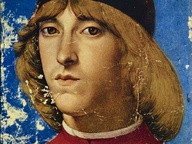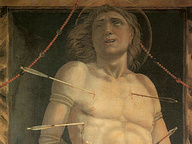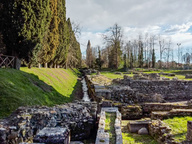Bruno Di Bello
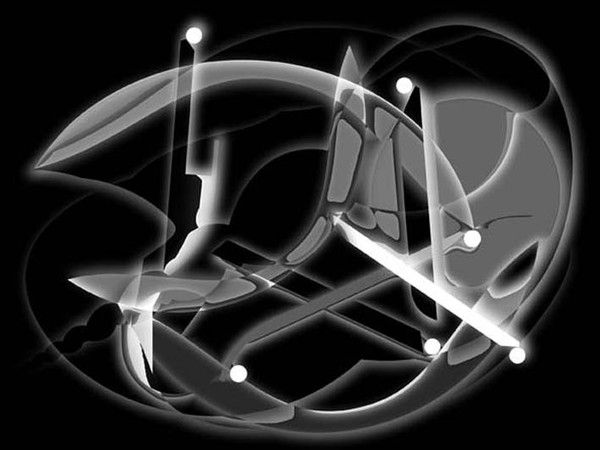
Bruno Di Bello, Con Oscar neg 1, 2015, inkjet on canvas, 125 x 140 cm
From 17 Novembre 2015 to 23 Gennaio 2016
Milan
Place: Fondazione Marconi: Arte moderna e contemporanea
Address: via Tadino 15
Times: Tuesday-Saturday 10am-01pm / 03-07pm. Closed 24 December - 6 January 2016
Ticket price: free entrance
Telefono per informazioni: +39 02 29 41 92 32
E-Mail info: info@fondazionemarconi.org
Official site: http://www.fondazionemarconi.org
The Marconi Foundation presents the exhibition, Bruno Di Bello with a group of works created by the artist over the past five years.
Displayed on the ground floor of the exhibition space will be a series of new works, studies and later variations of the five large triptychs executed in 2010 for the exhibition held at the Niteroi Contemporary Art Museum in Rio de Janeiro.
When I received the photos and map of the museum, designed by Oscar Niemeyer, I became fascinated by the beauty of the building, a true architectural gem, and the idea immediately came to me to use the signs on the plan indicating the five walls and the columns for the first of my triptychs. The hexagonal room, centred on the circle of external windows, reminded me of the shape of the countless rooms in the imaginary “Library of Babel” described by Jorge Luis Borges: a hexagon with five walls and one side open as an entrance. (Coincidence or reference?) Precisely the museum room I’d imagined for my five triptychs. This led to With Oscar, the first triptych on show, with a series of variations in which the signs of the separate walls, punctuated by the columns that support the upper structure, communicate with my signs derived from fractal geometry in the various solutions on show in this exhibition. (Bruno Di Bello)
These digital abstractions represent a sort of profound renewal in relation to Bruno Di Bello’s artistic experiments of previous years and to the tradition of “off camera” photography.
They have come after a long period of reflection, during which the artist – who already in the late 1980s had pioneered the replacement of his darkroom with digital hardware and software – was able to devote himself to the study of the new technologies, and in particular to digital photography, which in the interim enabled him to become an expert in computerised image creation and processing techniques.
In these works, Di Bello creates a virtual universe derived from a mathematical model, but one in which he intervenes by deciding which variable to introduce into the automatic process of iconic generation and proliferation.
Having learned about the theories of mathematician Benoît Mandelbrot, in the 1990s the artist began to study fractal geometry. In the late 1970s, Mandelbrot conceived that forms found in nature and considered the result of chance (the beauty of orchids, the jaggedness of coastlines, the shape of clouds...) could be described by a geometry based on a mathematical calculation, and that similar forms could be recreated by means of a complex system of computer-solved equations.
Fractal mathematics and geometry have been applied in the most varied fields of knowledge: from mapping to forecasting stock market movements and from architectural design to astrophysics, but Di Bello recalled that in the history of art, whenever geometry changed, art and architecture changed too, and that since the 1950s musicians have been using electronic instruments for their compositions, and that since the 1970s, architects have replaced the drawing board and pencil with computers. Many years ago, even Paul Klee – a constant reference point for Di Bello – researched the relationship between geometry and nature’s forms through various experiments and exercises in the lessons he taught at the Bauhaus).
The philosopher Mario Costa has described the artist’s work in the following way: Bruno Di Bello has understood that the limit of the aseity of an image, due to its logical and therefore mental nature, equals the limit of whatever he has been searching for his whole life. That is, he has understood that digital images do not refer to any subject or object, that they have no referent whatsoever, and that they themselves must be treated as referents; in other words, as new things he has to contend with on an aesthetic level.
To mark this occasion, Quaderno della Fondazione no. 18 will be published with an introductory essay by Bruno Cora. Opening: 17 November 2015 from 18.00 From 18 November 2015 to 23 January 2016 Biographical notes
Bruno Di Bello was born in Torre del Greco in 1938. After studying at the Naples Academy of Fine Arts, he began to exhibit his work. Together with Biasi, Del Pezzo, Fergola, Luca and Persico, he founded Gruppo ’58. Among the merits of this young group was to establish direct contact with contemporary art events in Milan, particularly through the magazine “Documento Sud”, the ideal equivalent of “Azimuth”. After the group’s first exhibitions at the Galleria San Carlo and the Galleria Minerva in Naples, in 1960 Di Bello held his first solo show at Galleria 2000 in Bologna. In 1965 he began to include photography in his work, and in 1966 held his first solo show at Lucio Amelio’s Modern Art Agency. In 1967 he began to use light-sensitive canvas directly and relocated to Milan. The following year he exhibited with the Mec-Art group, theorised by Pierre Restany.
Di Bello investigated the possibilities of deconstructing images, studying the icons of the main figures of the historical avant-gardes and their artistic myths (Klee, Duchamp, Man Ray, Mondrian and the Russian Constructivists), and from this developing the notion of art as a reflection on the history of modern art.
He exhibited for the first time in Milan at Galleria Franco Toselli in 1969, and in 1970 at Kuchels Gallery (Bochum), Wspòlczesna Gallery (Warsaw), Galleria Bertesca (Genoa) and at the Venice Biennale.
1971 marked his first collaboration with Studio Marconi: an installation consisting of twenty-six photographic canvases with the deconstruction of the entire alphabet. It was exhibited again in 1974, ’76, ’78 and ’81. In the early 1970s his photographic canvases also began to include words and concepts whose deconstruction and reconstruction animate a game involving the loss and rediscovery of meaning. In 1974, he exhibited at the Art in Progress Gallery in Munich and at the Kunsthalle in Bern, in 1975 at the Müller Gallery (Stuttgart) and the ICC (Antwerp), in 1977 at the Galleria Lucio Amelio (Naples) and the Museum Boijmans Van Beuningen (Rotterdam). In 1978 his work was shown at the Galleria Rondanini (Rome), and in the summer of 1980 he produced a large work for the Festival of Spoleto.
Other works from the 1970s and 1980s were produced by drawing directly on photosensitive canvas with the beam of an electric torch. Also during the 1980s Di Bello experimented with a new way of using the photographic technique, juxtaposing human figures and objects between the light source and the canvas so that their shadows were cast on the latter. He then developed the photosensitive canvas with broad brush strokes of developer, as in Apollo and Dafne nel terremoto, made for the Terrae motus collection displayed by Lucio Amelio in 1987 and exhibited in Paris at the Grand Palais, and now part of the collection at the Royal Palace of Caserta.
In the 1990s, Di Bello began to study the new technologies, researching synthetic images, digital photography and new geometries visualised by computer. He showed his new work in 2003 at the Galleria Giò Marconi, in 2004 at the Galleria Plurima (Udine), in 2005 at Fondazione Morra (Naples), and in 2008 at the Galleria Elleni (Bergamo).
In 2010, the Marconi Foundation held a major retrospective of his work. The occasion was marked by a monograph, Bruno Di Bello – Antologia, published by Silvana Editoriale for the VAF-Stiftung, Frankfurt am Main and edited by Volker Feierabend with texts by Michele Bonuomo, Mario Costa, Marco Meneguzzo and Angela T ecce.
In 2011, he held a solo show at the Museu de Arte Contemporânea de Niterói (MAC) in Rio de Janeiro. The show had debuted at the Certosa Museum on Capri then moved to the Palace of Arts (PAN) in Naples. The three exhibitions were the result of an initiative by the Arteas association, led by Maurizio Siniscalco with the critic Mario Franco as consultant.
In 2011, Di Bello held a keynote lecture at Milan Polytechnic during the course taught by Alberto Aschieri, and showed his Grande vetro 2 from 1975 at the exhibition of student works on the Polytechnic patio.
Bruno Di Bello lives and works in Milan.
Major public collections: Landesmuseum Joanneum, Graz - Museum Boijmans Van Beuningen, Rotterdam Museum Ostwall, Dortmund - Museo Rufino Tamayo, Mexico City - Galleria dell’Accademia, Naples - Galleria Nazionale, Parma - Gallerie d’Italia, Milan - Museum of Modern Art, Bologna - Museum of Modern and Contemporary Art of Trento and Rovereto MART (collection Feierabend) - Museo della Reggia, Caserta Museo del Novecento, Museo Madre, Naples.
Opening: 17 November 2015 from 6pm
Displayed on the ground floor of the exhibition space will be a series of new works, studies and later variations of the five large triptychs executed in 2010 for the exhibition held at the Niteroi Contemporary Art Museum in Rio de Janeiro.
When I received the photos and map of the museum, designed by Oscar Niemeyer, I became fascinated by the beauty of the building, a true architectural gem, and the idea immediately came to me to use the signs on the plan indicating the five walls and the columns for the first of my triptychs. The hexagonal room, centred on the circle of external windows, reminded me of the shape of the countless rooms in the imaginary “Library of Babel” described by Jorge Luis Borges: a hexagon with five walls and one side open as an entrance. (Coincidence or reference?) Precisely the museum room I’d imagined for my five triptychs. This led to With Oscar, the first triptych on show, with a series of variations in which the signs of the separate walls, punctuated by the columns that support the upper structure, communicate with my signs derived from fractal geometry in the various solutions on show in this exhibition. (Bruno Di Bello)
These digital abstractions represent a sort of profound renewal in relation to Bruno Di Bello’s artistic experiments of previous years and to the tradition of “off camera” photography.
They have come after a long period of reflection, during which the artist – who already in the late 1980s had pioneered the replacement of his darkroom with digital hardware and software – was able to devote himself to the study of the new technologies, and in particular to digital photography, which in the interim enabled him to become an expert in computerised image creation and processing techniques.
In these works, Di Bello creates a virtual universe derived from a mathematical model, but one in which he intervenes by deciding which variable to introduce into the automatic process of iconic generation and proliferation.
Having learned about the theories of mathematician Benoît Mandelbrot, in the 1990s the artist began to study fractal geometry. In the late 1970s, Mandelbrot conceived that forms found in nature and considered the result of chance (the beauty of orchids, the jaggedness of coastlines, the shape of clouds...) could be described by a geometry based on a mathematical calculation, and that similar forms could be recreated by means of a complex system of computer-solved equations.
Fractal mathematics and geometry have been applied in the most varied fields of knowledge: from mapping to forecasting stock market movements and from architectural design to astrophysics, but Di Bello recalled that in the history of art, whenever geometry changed, art and architecture changed too, and that since the 1950s musicians have been using electronic instruments for their compositions, and that since the 1970s, architects have replaced the drawing board and pencil with computers. Many years ago, even Paul Klee – a constant reference point for Di Bello – researched the relationship between geometry and nature’s forms through various experiments and exercises in the lessons he taught at the Bauhaus).
The philosopher Mario Costa has described the artist’s work in the following way: Bruno Di Bello has understood that the limit of the aseity of an image, due to its logical and therefore mental nature, equals the limit of whatever he has been searching for his whole life. That is, he has understood that digital images do not refer to any subject or object, that they have no referent whatsoever, and that they themselves must be treated as referents; in other words, as new things he has to contend with on an aesthetic level.
To mark this occasion, Quaderno della Fondazione no. 18 will be published with an introductory essay by Bruno Cora. Opening: 17 November 2015 from 18.00 From 18 November 2015 to 23 January 2016 Biographical notes
Bruno Di Bello was born in Torre del Greco in 1938. After studying at the Naples Academy of Fine Arts, he began to exhibit his work. Together with Biasi, Del Pezzo, Fergola, Luca and Persico, he founded Gruppo ’58. Among the merits of this young group was to establish direct contact with contemporary art events in Milan, particularly through the magazine “Documento Sud”, the ideal equivalent of “Azimuth”. After the group’s first exhibitions at the Galleria San Carlo and the Galleria Minerva in Naples, in 1960 Di Bello held his first solo show at Galleria 2000 in Bologna. In 1965 he began to include photography in his work, and in 1966 held his first solo show at Lucio Amelio’s Modern Art Agency. In 1967 he began to use light-sensitive canvas directly and relocated to Milan. The following year he exhibited with the Mec-Art group, theorised by Pierre Restany.
Di Bello investigated the possibilities of deconstructing images, studying the icons of the main figures of the historical avant-gardes and their artistic myths (Klee, Duchamp, Man Ray, Mondrian and the Russian Constructivists), and from this developing the notion of art as a reflection on the history of modern art.
He exhibited for the first time in Milan at Galleria Franco Toselli in 1969, and in 1970 at Kuchels Gallery (Bochum), Wspòlczesna Gallery (Warsaw), Galleria Bertesca (Genoa) and at the Venice Biennale.
1971 marked his first collaboration with Studio Marconi: an installation consisting of twenty-six photographic canvases with the deconstruction of the entire alphabet. It was exhibited again in 1974, ’76, ’78 and ’81. In the early 1970s his photographic canvases also began to include words and concepts whose deconstruction and reconstruction animate a game involving the loss and rediscovery of meaning. In 1974, he exhibited at the Art in Progress Gallery in Munich and at the Kunsthalle in Bern, in 1975 at the Müller Gallery (Stuttgart) and the ICC (Antwerp), in 1977 at the Galleria Lucio Amelio (Naples) and the Museum Boijmans Van Beuningen (Rotterdam). In 1978 his work was shown at the Galleria Rondanini (Rome), and in the summer of 1980 he produced a large work for the Festival of Spoleto.
Other works from the 1970s and 1980s were produced by drawing directly on photosensitive canvas with the beam of an electric torch. Also during the 1980s Di Bello experimented with a new way of using the photographic technique, juxtaposing human figures and objects between the light source and the canvas so that their shadows were cast on the latter. He then developed the photosensitive canvas with broad brush strokes of developer, as in Apollo and Dafne nel terremoto, made for the Terrae motus collection displayed by Lucio Amelio in 1987 and exhibited in Paris at the Grand Palais, and now part of the collection at the Royal Palace of Caserta.
In the 1990s, Di Bello began to study the new technologies, researching synthetic images, digital photography and new geometries visualised by computer. He showed his new work in 2003 at the Galleria Giò Marconi, in 2004 at the Galleria Plurima (Udine), in 2005 at Fondazione Morra (Naples), and in 2008 at the Galleria Elleni (Bergamo).
In 2010, the Marconi Foundation held a major retrospective of his work. The occasion was marked by a monograph, Bruno Di Bello – Antologia, published by Silvana Editoriale for the VAF-Stiftung, Frankfurt am Main and edited by Volker Feierabend with texts by Michele Bonuomo, Mario Costa, Marco Meneguzzo and Angela T ecce.
In 2011, he held a solo show at the Museu de Arte Contemporânea de Niterói (MAC) in Rio de Janeiro. The show had debuted at the Certosa Museum on Capri then moved to the Palace of Arts (PAN) in Naples. The three exhibitions were the result of an initiative by the Arteas association, led by Maurizio Siniscalco with the critic Mario Franco as consultant.
In 2011, Di Bello held a keynote lecture at Milan Polytechnic during the course taught by Alberto Aschieri, and showed his Grande vetro 2 from 1975 at the exhibition of student works on the Polytechnic patio.
Bruno Di Bello lives and works in Milan.
Major public collections: Landesmuseum Joanneum, Graz - Museum Boijmans Van Beuningen, Rotterdam Museum Ostwall, Dortmund - Museo Rufino Tamayo, Mexico City - Galleria dell’Accademia, Naples - Galleria Nazionale, Parma - Gallerie d’Italia, Milan - Museum of Modern Art, Bologna - Museum of Modern and Contemporary Art of Trento and Rovereto MART (collection Feierabend) - Museo della Reggia, Caserta Museo del Novecento, Museo Madre, Naples.
Opening: 17 November 2015 from 6pm
SCARICA IL COMUNICATO IN PDF
COMMENTI

-
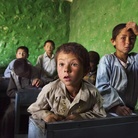 Dal 20 dicembre 2024 al 04 maggio 2025
Fermo | Palazzo dei Priori
Dal 20 dicembre 2024 al 04 maggio 2025
Fermo | Palazzo dei Priori
-
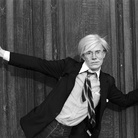 Dal 20 dicembre 2024 al 04 maggio 2024
Gorizia | Palazzo Attems Petzenstein
Dal 20 dicembre 2024 al 04 maggio 2024
Gorizia | Palazzo Attems Petzenstein
-
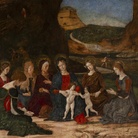 Dal 18 dicembre 2024 al 18 dicembre 2024
Venezia | Museo Correr
Dal 18 dicembre 2024 al 18 dicembre 2024
Venezia | Museo Correr
-
 Dal 14 dicembre 2024 al 02 marzo 2025
Palermo | Palazzo Abatellis
Dal 14 dicembre 2024 al 02 marzo 2025
Palermo | Palazzo Abatellis
-
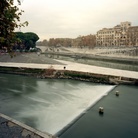 Dal 12 dicembre 2024 al 23 febbraio 2025
Roma | Palazzo Altemps
Dal 12 dicembre 2024 al 23 febbraio 2025
Roma | Palazzo Altemps
-
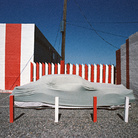 Dal 13 dicembre 2024 al 31 agosto 2025
Roma | Museo dell'Ara Pacis
Dal 13 dicembre 2024 al 31 agosto 2025
Roma | Museo dell'Ara Pacis
